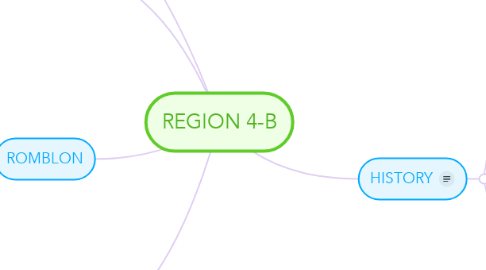
1. MINDORO
1.1. Is a province in the Philippines located in the island of Mindoro under Mimaropa region in Luzon, about 140 kilometres (87 mi) southwest of Manila
2. MARINDUQUE
2.1. Is an island province in the Philippines located in Southwestern Tagalog Region or MIMAROPA, formerly designated as Region IV-B. Its capital is the municipality of Boac. Marinduque lies between Tayabas Bay to the north and Sibuyan Sea to the south. It is west of the Bondoc Peninsula of Quezon province; east of Mindoro Island; and north of the island province of Romblon.
3. ROMBLON
3.1. Is an archipelagic province of the Philippines located in the Mimaropa region. Its main islands include Tablas, the largest, which covers nine municipalities, Sibuyan with its three towns, as well as the smaller island municipalities of Corcuera, Banton, Concepcion, San Jose, and Romblon, the provincial capital.
4. PALAWAN
4.1. Is an archipelagic province of the Philippines that is located in the region of MIMAROPA. It is the largest province in the country in terms of total area of jurisdiction. Its capital is the city of Puerto Princesa, but the city is governed independently from the province as a highly urbanized city.
5. HISTORY
5.1. MIMAROPA Region, together with CALABARZON, were officially created with the partitioning of Region IV (Southern Tagalog) into the two regions on 17 May 2002 with the issuance of Executive Order No. 103 by then-President Gloria Macapagal-Arroyo; for the purpose of promoting efficiency in the government, accelerating social and economic development and improving public services in the provinces covered. Region IV-B was designated as MIMAROPA, which stands for the island provinces belonging to the Southern Tagalog region—Mindoro (Oriental and Occidental), Marinduque, Romblon and Palawan. Region IV-A was designated as CALABARZON.
5.2. On 23 May 2005, Executive Order 429 was issued, moving the province of Palawan to the region of Western Visayas,[5] designating Region IV-B as MIMARO. However, Palawan residents criticized the move, citing a lack of consultation, with most residents in Puerto Princesa and nearly all municipalities preferring to stay with Region IV-B. Consequently, Administrative Order No. 129 was issued on 19 August 2005 to address this backlash. This order directed the abeyance of Executive Order 429 pending the approval of an implementation plan for the orderly transfer of Palawan from Mimaropa to Region VI.[6]
5.3. FAMOUS PLACES
5.3.1. There are a lot of famous tourist spots that can be seen in MIMAROPA Region
5.3.2. Puerto Prinsesa Underground River
5.3.2.1. Is a protected area of the Philippines located about 80 kilometres (50 mi) north of the city centre of Puerto Princesa, Palawan. The river is also called Puerto Princesa Underground River.
5.3.2.2. The national park is located in the Saint Paul Mountain Range on the western coast of the island. It is bordered by St. Paul Bay to the north and the Babuyan River to the east. The City Government of Puerto Princesa has managed the National Park since 1992. The entrance to the subterranean river is a short hike or boat ride from the town Sabang.
5.3.2.3. In 2010, a group of environmentalists and geologists discovered that the underground river has a second floor, which means that there are small waterfalls inside the cave. They also found a cave dome measuring 300 m (980 ft) above the underground river, rock formations, large bats, a deep water hole in the river, more river channels, and another deep cave, as well as marine creatures and more.
5.3.3. NACPAN BEACH
5.3.3.1. A 4-kilometre (2.5 mi) stretch of powdery white sand and pristine azure waters which is 45 minutes to an hour away from downtown El Nido via tricycle.
5.3.3.2. This rocky peninsula offers signature views of the twin beaches after a short vertical hike up the trail, but the land was purchased by a private developer in 2016.
5.3.3.3. The developer has plans to build a luxury resort on the grounds. Protests to the sale and the building have come in the form of squatters attempting to reclaim the land.

